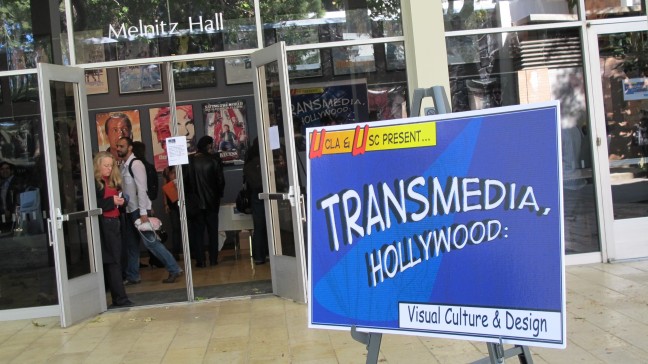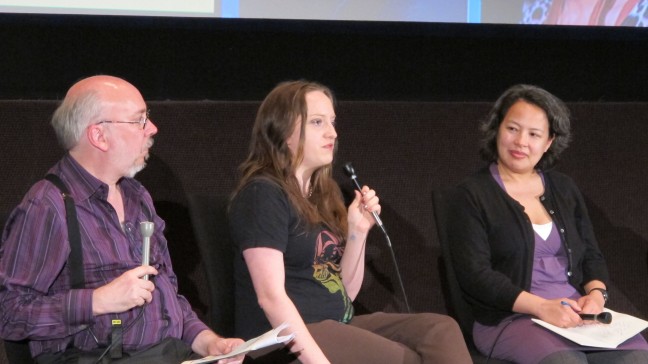 By Gary Gabisan – Digital & Interactive Media Manager for CAAM.
By Gary Gabisan – Digital & Interactive Media Manager for CAAM.
Last Friday, I made the trek from the bay to sunny LA to check out the Transmedia, Hollywood 2: Visual Culture and Design conference at the UCLA film school. This conference brought together an interesting collection of screenwriters, theme park creators, production designers, executive producers and media scholars to discuss Transmedia storytelling. Honestly, I wasn’t too familiar with the term and the word brought visions of Rupaul’s Drag Race to mind.
DEFINITION OF TRANSMEDIA STORYTELLING
What’s Transmedia storytelling you ask or just Transmedia for that matter?
I find USC Professor Henry Jenkins’ definition of Transmedia storytelling to be the most definitive.
“Transmedia storytelling represents a process where integral elements of a fiction get dispersed systematically across multiple delivery channels for the purpose of creating a unified and coordinated entertainment experience. Ideally, each medium makes it own unique contribution to the unfolding of the story.”
PANDEMICS
Panelist Lance Weiler and his work really stood out to me. Weiler’s approach to storytelling and new media unifies video, websites, mobile apps and games. He is the creator of Pandemic, a transmedia experience, that recently took place at the Sundance Film Festival. Weiler envisions storytelling like sitting around a camp fire where people tell stories and participate in the creation of the story.
NOT JUST FOR HOLLYWOOD
Now envision that participatory storytelling in documentary and social issue works on all media platforms currently available to independent media makers. The possibilities are quite exciting.
Have you seen ITVS’ 2007 alternate reality game “WORLD WITHOUT OIL”? Very interesting work on many levels.
TRANSMEDIA FOR PUBLIC MEDIA PRODUCERS?
As the panelist talked through out the day, representatives from established media corporations touched upon the way that people’s consumption of media has changed and the old methods of aggregating an audience and monetizing from the event are no longer profitable.
Adaptation to a changing media landscape is key to survival.
With the ending of federal funding for public broadcasting looming in the air, adaptation and change is definitely in order for those who consume and create public media.
COULD A TRANSMEDIA APPROACH BE THE FUTURE OF PUBLIC MEDIA?
Let us know what you think. Post your comments below.

Gary Gabisan is the Digital and Interactive Media Manager for the Center for Asian American Media.
Related links:
Transmedia, Hollywood 2: Visual Culture and Design
http://legacy.tft.ucla.edu/transmedia/index.cfm?action=panels
The Revenge of the Origami Unicorn: Seven Principles of Transmedia Storytelling Part 1
http://henryjenkins.org/2009/12/the_revenge_of_the_origami_uni.html
The Revenge of the Origami Unicorn: Seven Principles of Transmedia Storytelling Part 2
http://henryjenkins.org/2009/12/revenge_of_the_origami_unicorn.html





Hey Gary, thanks for this post. As a social justice communicator, I find this intriguing as a possible platform for reaching out to new audiences.
I think it brings up many of the issues the music industry has struggled with around IP, sharing, monetizing, distribution, and consumer created content. Transmedia will naturally fit public consumption as mobile takes over and the consumer is also the publisher–I love what say about participatory storytelling–this is at the crux of our adaptation and our collaborative success’.